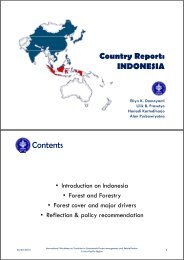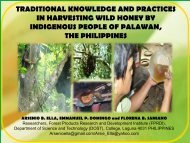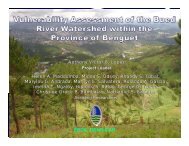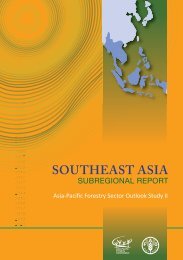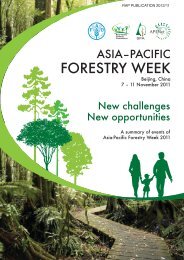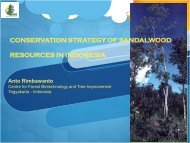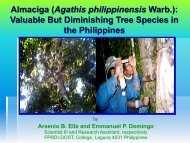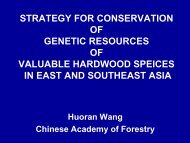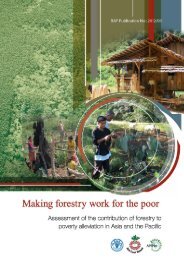Community guidelines for accessing forestry voluntary carbon ... - FAO
Community guidelines for accessing forestry voluntary carbon ... - FAO
Community guidelines for accessing forestry voluntary carbon ... - FAO
You also want an ePaper? Increase the reach of your titles
YUMPU automatically turns print PDFs into web optimized ePapers that Google loves.
Carbon Offset<br />
A <strong>carbon</strong> credit (one tCO 2<br />
e of emission reductions) generated through<br />
activities in one place may be ‘sold’ to individuals or organizations<br />
unconnected with those activities. The buyer of this <strong>carbon</strong> credit<br />
claims to have compensated, or ‘offset’, an equal amount of emissions<br />
generated from their own activities. The VCM is essentially a market in<br />
<strong>carbon</strong> offsets.<br />
Carbon Pool<br />
The locations within an ecosystem where <strong>carbon</strong> is present continuously.<br />
In a <strong>for</strong>est, the main <strong>carbon</strong> pools are in biomass (both above and below<br />
ground), dead matter and soil. Harvested Wood Products (HWPs) are<br />
also considered a <strong>carbon</strong> pool, although no longer part of the <strong>for</strong>est<br />
ecosystem, because they store <strong>carbon</strong> continuously in the long term.<br />
Carbon Sequestration<br />
The uptake and storage of <strong>carbon</strong> is known as <strong>carbon</strong> sequestration.<br />
Trees and other plants, <strong>for</strong> example, do this by absorbing CO 2<br />
from the<br />
atmosphere. In the process known as photosynthesis, CO 2<br />
is broken<br />
down into oxygen, which is released back into the atmosphere, and<br />
<strong>carbon</strong>, which becomes part of the plant. As a result, <strong>for</strong>ests store (or<br />
‘sequester’) large amounts of <strong>carbon</strong>.<br />
Carbon Sink<br />
Carbon sinks are <strong>carbon</strong> pools which store more <strong>carbon</strong> than they<br />
release. Forests and oceans act as major <strong>carbon</strong> sinks in the global<br />
<strong>carbon</strong> cycle; <strong>carbon</strong> constantly flows into them and out of them, back<br />
into the atmosphere. In some situations, <strong>for</strong>ests may release more<br />
<strong>carbon</strong> than they store, making them ‘<strong>carbon</strong> sources’. Note: the <strong>carbon</strong><br />
stored in fossil fuel deposits is not considered a <strong>carbon</strong> sink, because it<br />
is not active in the <strong>carbon</strong> cycle.<br />
xii




